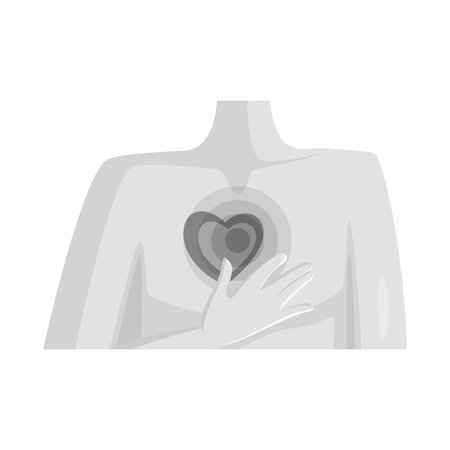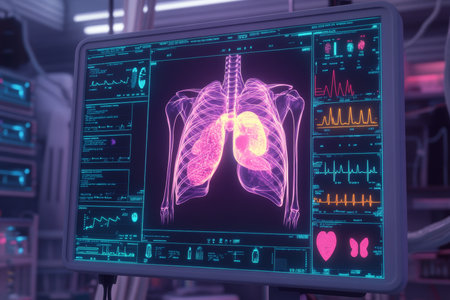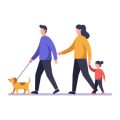Overview of Pulmonary Rehabilitation in the US
Pulmonary rehabilitation (PR) is a specialized program designed to help people living with chronic respiratory diseases, such as chronic obstructive pulmonary disease (COPD), asthma, and pulmonary fibrosis. The main goal of PR is to improve patients quality of life by providing exercise training, education about lung health, and support for managing daily symptoms. In the United States, PR is recognized as an essential part of treatment for many people with long-term lung problems.
What Is Pulmonary Rehabilitation?
Pulmonary rehabilitation brings together a team of healthcare professionals—usually including doctors, nurses, physical therapists, respiratory therapists, and dietitians—who work closely with patients. Programs often last several weeks and include:
- Supervised exercise sessions
- Breathing techniques
- Nutrition counseling
- Education about medication use and symptom management
- Emotional support or group counseling
Why Is PR Important?
For patients with chronic respiratory diseases, everyday activities like walking or climbing stairs can be challenging. PR helps by increasing physical strength and endurance, reducing shortness of breath, and teaching skills to cope better at home and in the community. Studies have shown that people who complete PR programs experience fewer hospital visits and enjoy a better quality of life.
Participation Rates in the United States
Although pulmonary rehabilitation is proven to be effective, not everyone who could benefit from it actually participates. Below is a summary of current participation rates in the US:
| Chronic Respiratory Condition | Estimated Eligible Patients | % Participating in PR |
|---|---|---|
| COPD (Chronic Obstructive Pulmonary Disease) | Millions | Less than 5% |
| Pulmonary Fibrosis | Tens of thousands | Less than 10% |
| Other Chronic Lung Diseases | Tens of thousands | Data limited, but generally low |
Main Takeaway
The majority of Americans who could benefit from pulmonary rehabilitation are not participating in these programs. This situation highlights the need to understand what barriers exist—especially related to socioeconomic status and where someone lives in the country.
2. Socioeconomic Barriers to Access
How Insurance Coverage Impacts Pulmonary Rehabilitation Participation
In the United States, insurance coverage is a key factor in determining whether patients can access pulmonary rehabilitation (PR) programs. Many people with chronic lung diseases, like COPD, rely on health insurance to help cover the cost of treatment. However, not all insurance plans provide the same level of coverage for PR. For example, some private insurance plans may offer limited sessions or require high co-pays, while others might not cover PR at all. Medicaid and Medicare do cover PR, but patients can still face out-of-pocket expenses that discourage them from participating.
Insurance Coverage Comparison Table
| Insurance Type | Typical PR Coverage | Potential Barriers |
|---|---|---|
| Medicare | Covers PR for qualifying diagnoses | Limited number of sessions, co-pays required |
| Medicaid | Covers PR in many states | State-level differences, prior authorizations needed |
| Private Insurance | Varies by plan; may cover partially or fully | High deductibles/co-pays, session limits, lack of coverage in some plans |
| No Insurance | No coverage for PR services | Full out-of-pocket costs, often unaffordable |
The Role of Income in Accessing Care
Income level greatly affects whether someone can join a PR program. People with lower incomes may have trouble paying for transportation to the rehab center, taking time off work, or handling co-pays and other extra costs. Even when programs are available nearby, these financial pressures can make participation difficult or impossible.
Common Cost-Related Challenges Faced by Patients:
- Transportation expenses to and from the clinic
- Lost wages from missing work hours for appointments
- Childcare costs during sessions for those with young children
- Co-payments and deductibles even with insurance coverage
- Lack of affordable self-pay options for uninsured individuals
The Influence of Education Levels on Participation Rates
Education is another important factor in accessing pulmonary rehabilitation. Patients with higher education levels are more likely to know about the benefits of PR and how to find these programs. Those with less education might not be aware that PR exists or understand why it’s important. This knowledge gap means that many eligible patients never get referred or never seek out rehab on their own.
Key Points About Education and Participation:
- Patients with higher education may advocate more effectively for themselves.
- Lack of awareness leads to underutilization of available resources.
- Healthcare providers may assume patients won’t participate if they believe there are literacy barriers.
- Culturally appropriate educational materials can improve understanding and participation rates.

3. Geographic Disparities in PR Availability
Urban-Rural Differences in Pulmonary Rehabilitation Access
Pulmonary rehabilitation (PR) programs are not equally available across the United States. People living in urban areas generally have more access to hospitals and specialized rehab centers, while those in rural communities often struggle to find nearby options. The distance to the nearest PR center can be a major barrier for many patients, making it difficult or even impossible to participate in these important programs.
Distribution of PR Centers Across the US
The following table shows a simplified overview of how PR centers are distributed between urban and rural areas:
| Location | Access to PR Centers | Average Distance to Center |
|---|---|---|
| Urban Areas | High | < 10 miles |
| Suburban Areas | Moderate | 10-25 miles |
| Rural Areas | Low | > 25 miles |
Transportation Challenges and Long Travel Distances
For people living outside of big cities, transportation is often a real challenge. Many patients do not have access to reliable public transit or cannot drive long distances due to their health condition. Even if a PR center exists within driving distance, the cost and time required for frequent visits can be overwhelming. As a result, some patients may skip sessions or never enroll in a program at all.
Key Barriers Related to Location and Transportation:
- Lack of local PR programs in rural regions
- Limited public transportation options outside urban centers
- Travel expenses (gas, parking fees, etc.) add up quickly for regular visits
- Physical limitations make long trips uncomfortable or risky for those with advanced lung disease
- Weather and seasonal factors can further limit travel, especially in remote areas
Together, these geographic barriers highlight the need for creative solutions—such as telehealth or mobile PR services—to ensure everyone with chronic lung disease has a fair shot at receiving high-quality pulmonary rehabilitation, no matter where they live.
4. Cultural and Awareness Barriers
Pulmonary rehabilitation (PR) is a proven way to help people with chronic lung conditions improve their quality of life, but not everyone in the US has equal access or willingness to participate. Cultural beliefs, health literacy, and general awareness all play major roles in shaping participation among America’s diverse communities.
How Culture Influences PR Participation
The United States is a melting pot of cultures, each bringing its own attitudes toward health and medical care. In some communities, lung diseases may be seen as a normal part of aging or even as a stigma. Others might rely more on home remedies and hesitate to seek professional help. Understanding these cultural perspectives is key for healthcare providers who want to encourage PR participation.
| Community Group | Cultural Belief/Barrier | Impact on PR Participation |
|---|---|---|
| Hispanic/Latino | Family-centered decision-making, language barriers | May avoid group rehab; need for Spanish-language materials |
| African American | Mistrust of healthcare system due to historical injustices | Less likely to engage in programs led by unfamiliar providers |
| Rural Americans | Self-reliance, privacy concerns | Less likely to seek help until symptoms are severe |
| Asian American/Pacific Islander | Stigma around chronic illness, preference for traditional medicine | May not disclose symptoms or seek formal rehab services |
The Role of Health Literacy in Pulmonary Rehab Awareness
Health literacy means understanding basic health information needed to make good decisions about care. Many Americans struggle with medical jargon or don’t know what pulmonary rehabilitation is. This can lead to confusion about the benefits of PR and how it works.
- Lack of knowledge: Some patients have never heard of PR or think it only applies after surgery.
- Misinformation: Beliefs that PR is only exercise, or that it won’t help “serious” disease.
- Navigating insurance: Difficulty understanding what’s covered by Medicare, Medicaid, or private insurance can discourage participation.
Increasing Awareness Across Diverse Populations
Healthcare teams are working to increase awareness through community outreach, multilingual education materials, and partnerships with local organizations. When patients see information that reflects their language and values—and when trusted community leaders endorse PR—they’re more likely to join these programs.
Strategies That Help Bridge Gaps:
- Culturally tailored brochures and videos explaining PR benefits and steps involved
- Bilingual staff or interpreters at clinics offering pulmonary rehab services
- Outreach events at churches, community centers, and senior centers in underserved neighborhoods
- Patient testimonials from similar backgrounds sharing positive experiences with PR
- Simple explanations about insurance coverage and program costs upfront
Tackling cultural and awareness barriers helps ensure that everyone—regardless of background or location—can access the life-changing benefits of pulmonary rehabilitation.
5. Strategies to Improve Participation
Telehealth Options: Expanding Access from Home
One of the most effective ways to break down barriers to pulmonary rehabilitation is through telehealth services. Telehealth allows patients to attend rehab sessions online, using a smartphone, tablet, or computer. This is especially helpful for people living in rural areas or those who have trouble with transportation. Many programs now offer virtual exercise classes, educational sessions, and one-on-one coaching with healthcare professionals. Telehealth also lets patients participate at times that work best for them, making it easier to fit rehab into busy schedules.
Community Outreach Programs: Bringing Care Closer
Community outreach can make a big difference for people who face socioeconomic challenges or live far from major medical centers. Local clinics, community centers, and even churches can partner with healthcare providers to offer pulmonary rehab closer to home. These programs often include group exercise sessions, educational workshops about lung health, and support groups. Community outreach may also provide transportation vouchers or childcare support to help patients attend sessions.
Policy Initiatives: Making Rehab More Affordable and Accessible
Changing policies at the state and federal level can help remove financial and insurance barriers that prevent many Americans from joining pulmonary rehab programs. Here are some practical policy initiatives:
| Policy Initiative | How It Helps |
|---|---|
| Insurance Coverage Expansion | Covers more rehab costs so fewer out-of-pocket expenses for patients |
| Medicaid & Medicare Support | Makes sure low-income and older adults can access rehab services |
| Funding for Rural Health Programs | Supports local clinics and mobile units in underserved areas |
| Transportation Assistance Grants | Pays for rides to and from rehab appointments |
Making It Work Together
A combination of these strategies—using technology, building strong community partnerships, and pushing for supportive policies—can greatly increase participation in pulmonary rehabilitation across the United States. By addressing both socioeconomic and geographic barriers, more people can benefit from these life-changing programs.


